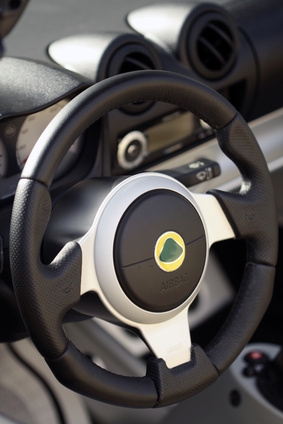
Front steering stabilizers reduce vibration and shaking in the steering wheel. Stabilizers are either factory installed prior to purchasing a vehicle or aftermarket additions to a vehicle. Aftermarket stabilizers offer high-quality performance due to their design for this sole purpose. Steering stabilizers are horizontal shock absorbers for steering systems.
Road hazards such as a blowout or an impact with debris can create a violent reaction in the steering wheel. Steering stabilizers prevent this jerking action. By absorbing the impact of unexpected jerking, the stabilizers will also prolong the life of ball joints and other components in the steering system. Much like regular shocks that absorb sudden impact on the suspension, steering stabilizers absorb sudden impact on the steering system.
Vehicles with tires 33 inches or smaller in diameter use single stabilizers; also, vehicles that do not provide heavy-duty functions only need single stabilizers. Most everyday-use vehicles benefit from single steering stabilizers. Vehicles with a tire diameter of 35 inches or larger, or come equipped with heavy-duty accessories such as winches and snow plows, need dual stabilizers. Lifted trucks and vehicles used for off-road purposes require dual steering stabilization for maximum control.
Lifting a vehicle shifts its center of gravity. Basic turns can become hazardous due to the shift of weight, increasing the possibility of the vehicle turning over. Manufacturers that produce lifted vehicles are required to display this type of warning on the vehicle's sun visor. Lifting the vehicle requires movement of offsets and mounting flanges, which affects the angle ratio between the tires and the vehicle. Alignment of the vehicle and stable suspension are vital to safe operation. Steering stabilizers will return steering control to raised vehicles. However, in any raised vehicle, the compromised shift in weight remains a safety concern due to rollover issues.
The anchoring end of the stabilizer attaches directly to the chassis of the vehicle. The functioning end of the stabilizer attaches to the tie rod. When pushing or pulling occurs in the tire, the stabilizer maintains the neutral position. Installing steering stabilizers requires no drilling or welding. Stabilizer models and requirements differ from vehicle to vehicle.